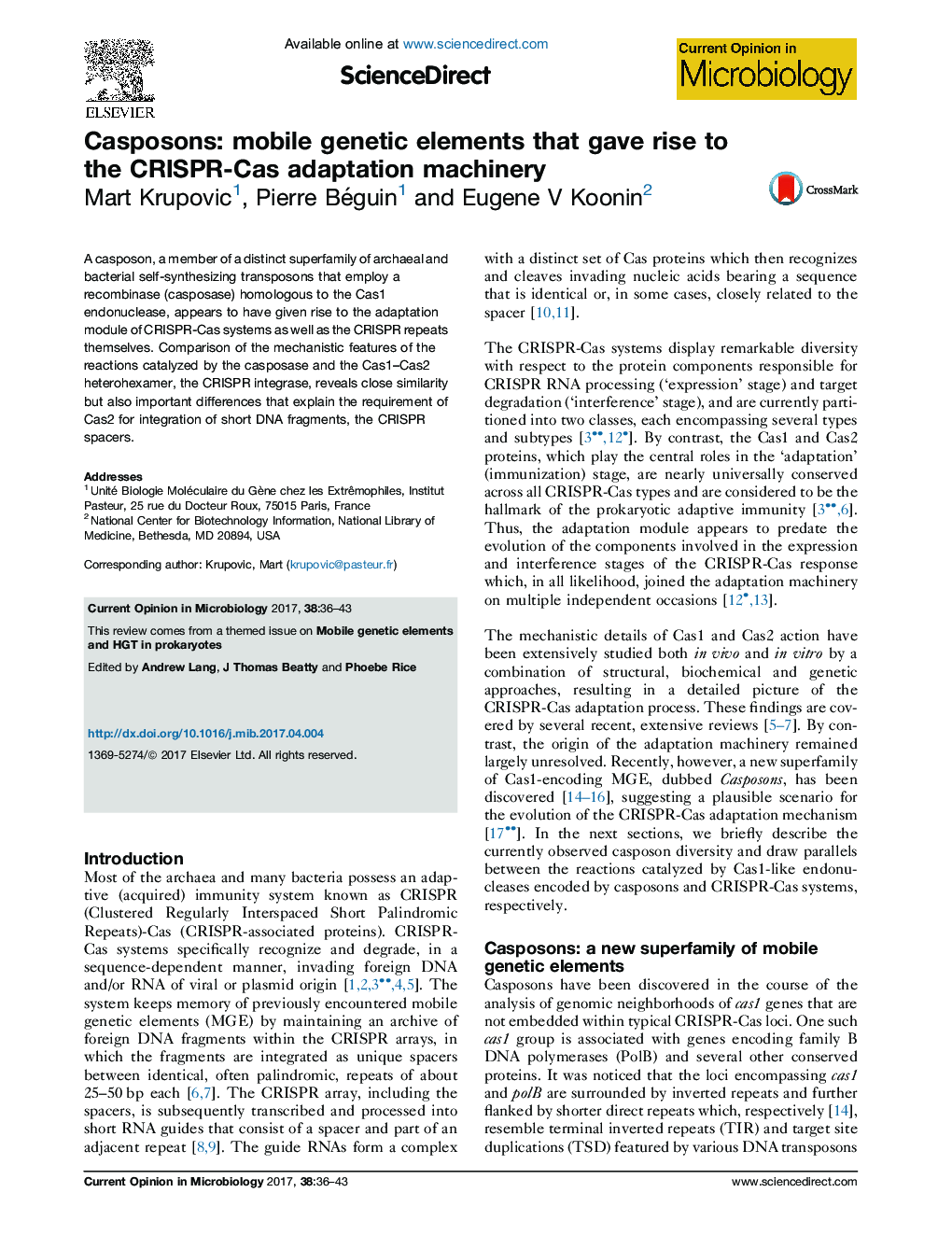| Article ID | Journal | Published Year | Pages | File Type |
|---|---|---|---|---|
| 5671690 | Current Opinion in Microbiology | 2017 | 8 Pages |
â¢Casposons are self-replicating mobile genetic elements found in bacteria and archaea.â¢Casposase is an active casposon integrase homologous to CRISPR-Cas1.â¢Casposons gave rise to the adaptation machinery of CRISPR-Cas.â¢CRISPR repeats and the Leader sequence have evolved from the casposon target site.â¢Recruitment of Cas2 was crucial for transforming the casposase into Cas1.
A casposon, a member of a distinct superfamily of archaeal and bacterial self-synthesizing transposons that employ a recombinase (casposase) homologous to the Cas1 endonuclease, appears to have given rise to the adaptation module of CRISPR-Cas systems as well as the CRISPR repeats themselves. Comparison of the mechanistic features of the reactions catalyzed by the casposase and the Cas1-Cas2 heterohexamer, the CRISPR integrase, reveals close similarity but also important differences that explain the requirement of Cas2 for integration of short DNA fragments, the CRISPR spacers.
Graphical abstractDownload high-res image (144KB)Download full-size image
